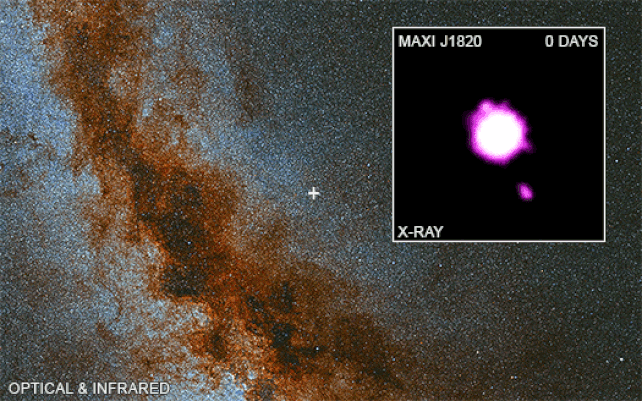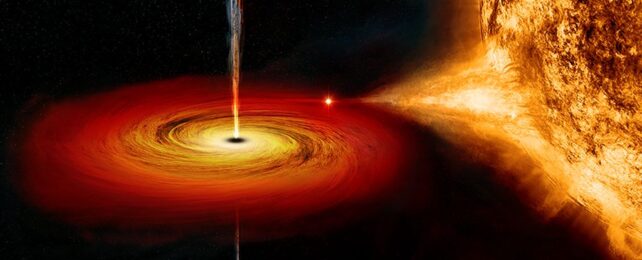The detailed mechanics of how matter falls down onto a black hole from outside the event horizon have been revealed in a new paper.
As predicted by Einstein's theory of gravity, there's a point at which material stops circling the black hole and falls straight down, plunging precipitously beyond the point of no return.
Now, in X-ray data of an active black hole, we've finally seen proof that this 'plunging region' exists.
"Einstein's theory predicted that this final plunge would exist, but this is the first time we have been able to demonstrate it happening," says theoretical physicist Andrew Mummery of Oxford University in the UK.
"Think of it like a river turning into a waterfall – hitherto, we have been looking at the river. This is our first sight of the waterfall."
Matter making its way towards a black hole doesn't follow a straight line. It circles around, like water swirling, spiraling, inexorably towards a drain. This is no idle simile: so apt is the comparison that scientists use swirling water vortices to study the environments around black holes.

Studying the black holes themselves is a little tricky, because the warped space-time around them is so extreme.
But, decades ago, Albert Einstein's theoretical work predicted that, at a certain proximity to the black hole, matter would no longer be able to follow a stable circular orbit, and would fall straight down – like water over the lip of that analogous drain.
There's no reason to believe that this isn't the case – matter has to cross the event horizon somehow, and Einstein's theory of gravity has held up to scrutiny across the board – but what astrophysicists have been unsure about is whether or not we would be able to detect it.
The work of Mummery and his colleagues had multiple parts. One of those was the development of numerical simulations and models that depict the plunging region to reveal the sort of light it emits. After that, they needed observational evidence that contained the same plunging region emission.
The black hole in question is found in a system about 10,000 light-years away called MAXI J1820+070. This system contains a black hole about 8.5 times the mass of the Sun – and a binary companion star, from which the black hole strips material as the pair of objects orbit, feeding in bursts that manifest as X-ray flickering.
Astronomers have been watching this black hole to better understand its behavior, so the researchers were able to access very high-quality data obtained using the X-ray NuSTAR and NICER instruments in low-Earth orbit. In particular, they focused on an outburst that took place in 2018.
Previous studies had noted that there was an extra glow detected in observations of this outburst that could not quite be accounted for.
A 2020 study speculated that this glow may emerge from within the innermost stable circular orbit region – that is, the plunging zone. Mummery and his colleagues studied this glow with particular care, and found that it matched up with the emission they derived from their simulations.
This, the researchers say, finally establishes the existence of the plunging region, without question, giving us a new probe for the extreme gravitational regime in the region immediately outside a black hole's event horizon.
"What is really exciting is that there are many black holes in the galaxy, and we now have a powerful new technique for using them to study the strongest known gravitational fields," Mummery says.
"We believe this represents an exciting new development in the study of black holes, allowing us to investigate this final area around them.
Only then can we fully understand the gravitational force. This final plunge of plasma happens at the very edge of a black hole and shows matter responding to gravity in its strongest possible form."
The research has been published in the Monthly Notices of the Royal Astronomical Society.
